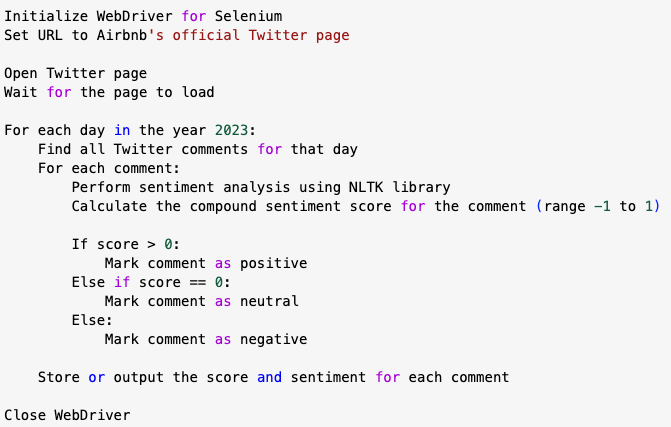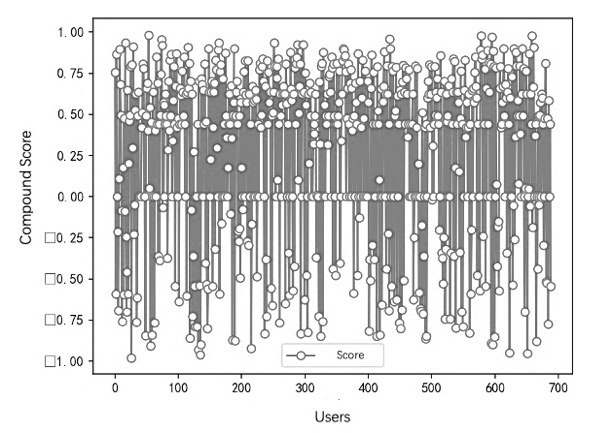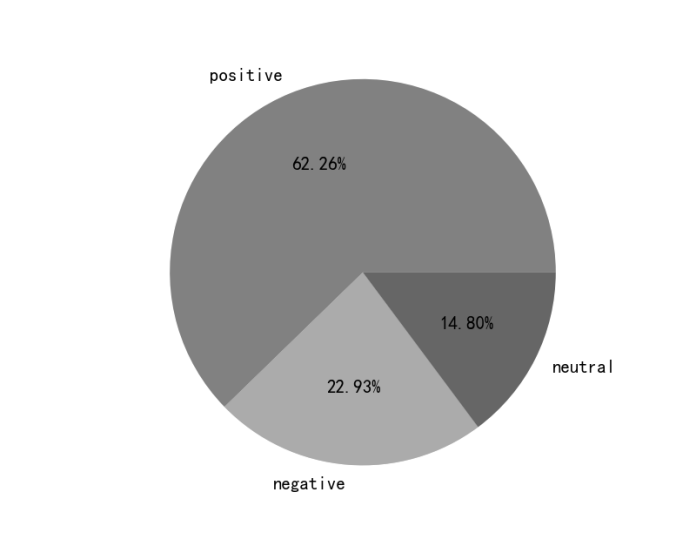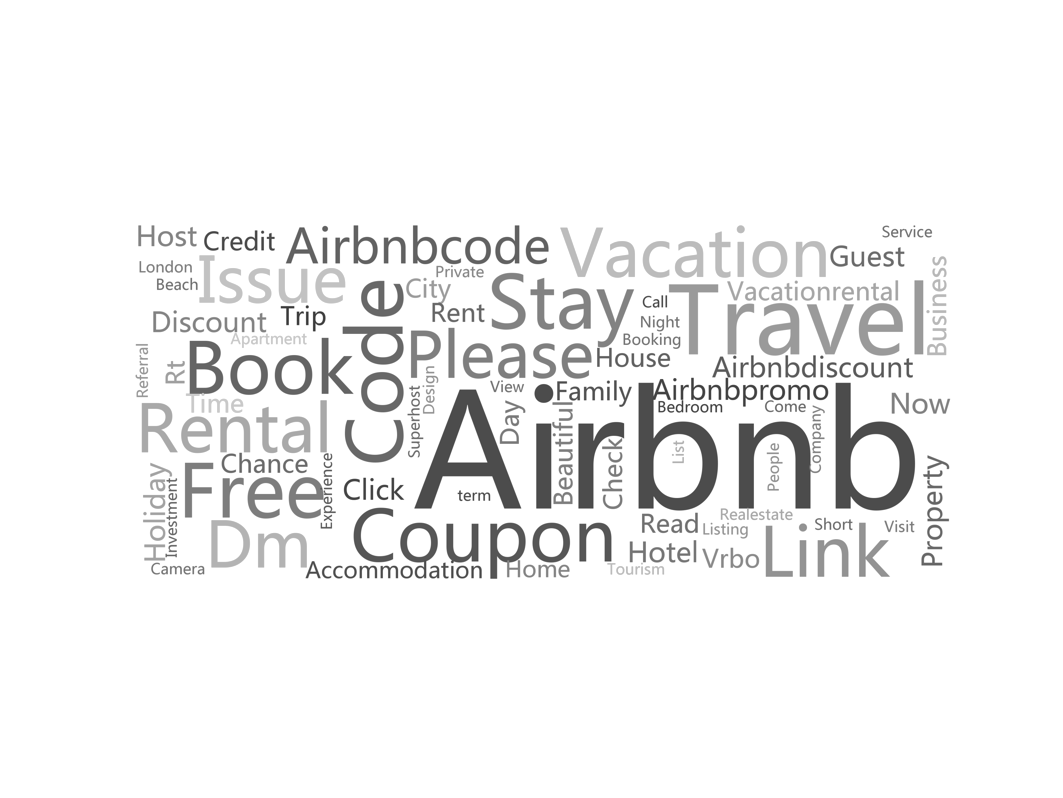1. Introduction
The COVID-19 pandemic outbreak dealt a severe blow to the global economy, particularly the tourism industry. Although the tourism economy started to recover as the outbreak was gradually controlled and vaccination became widely available, the economic losses caused by the sudden drop in tourists will take a longer cycle to recover [1]. Therefore, in this new era, digital transformation has become irreversible [2], and social media has become a key platform for tourism marketing. Studies have shown that social media is an essential source of access to macro-level tourism information and is particularly important for estimating tourism data [3].
Research has shown the growing importance of social media in tourism marketing [4]. Social media has shown a strong power in developing tourism in remote areas that are usually ignored by the international tourism community [5]. In addition, Ţuclea et al. found that trust in social media for tourism information led to people being more interested in communicating in this way and finding it more helpful throughout the trip-planning process [6]. With the impact of the COVID-19 pandemic and the gradual shift of people's consumption activities online, the importance of analyzing social media strategies has become increasingly important. According to Song et al. study, young consumers increasingly use electronic word-of-mouth (eWOM) on travel social networking sites to make purchasing decisions and they make recommendations for improving the usability and effectiveness of eWOM by marketing recommendations to attract more young consumers [7]. Further, Kathuria et al. determinants of social media use in travel planning were identified [8]. Intention was found to have a strong influence on actual use, which was influenced by factors such as technological convenience, perceived fun, perceived ease of use, perceived usefulness, media richness, trust and perceived risk. The rapid growth of social media analytics and multiple analytical approaches suggests an increasing commitment and capacity for comprehensive and robust data analysis in tourism and hospitality research [9]. However, theoretical research on applying social media, sentiment analysis and machine learning in the tourism industry still needs to be improved [10]. There is still a research gap in understanding the impact of social media on tourism business strategies [11].
Meanwhile, as a leader in the travel industry, Airbnb has been making full use of social media to shape consumer travel preferences and better design and deliver products and services through online data. As a result, this study will gather customer reviews and comments from Airbnb on social media sites using web crawling techniques. To guide social media strategies for the travel and lodging industry, represented by Airbnb, sentiment analysis is used to analyse customer attitudes and emotions, identify social media factors that impact consumer preferences and decisions, and forecast market trends.
This study is significant because it will offer a comprehensive knowledge of social media's function in travel marketing and demonstrate how machine learning and sentiment analysis may be applied to enhance social media marketing tactics. It has valuable ramifications for Airbnb in addition to offering insightful information to the travel sector, which promotes customer involvement and brand loyalty.
2. Methodology
2.1. Data Collection
Firstly, this paper uses Web Scraping to collect user reviews and feedback about Airbnb from Twitter. Web Scraping is an efficient and automated data collection method that can collect large amounts of data regularly. This technique can collect user reviews and feedback from social media platforms to form a database or data warehouse that provides a basis for further research [12, 13]. In this study, this paper designed a crawler to identify and collect relevant posts and comments containing the keyword "Airbnb" and content related to travel and accommodation social media marketing. To ensure the quality and relevance of the data, this paper limits the time frame to 2023 and excludes irrelevant or duplicate content.
2.2. Data Analysis
After data collection and cleansing is complete, this paper uses two main methods of data analysis: sentiment analysis and machine learning algorithms.
Sentiment analysis is a natural language processing (NLP) technique used to identify and classify emotional tendencies in text. In this study, this paper uses sentiment analysis to assess the emotions in user reviews, categorising them as positive, negative, or neutral, which helps us understand consumers' overall attitudes towards Airbnb's social media marketing strategy and which aspects are most popular or need improvement.
To predict consumer travel preferences and market trends, this paper also suggests using machine learning algorithms in subsequent studies. Specifically, this paper uses classification algorithms (e.g., support vector machines or decision trees) to analyse patterns and trends in user reviews and to predict the preferences of different user groups. In addition, clustering algorithms will be used to identify different user groups to target marketing strategies more precisely.
By combining these two approaches, this paper can gain a deeper understanding of the voice of the consumer on social media, analyse its impact on travel decisions, and optimise Airbnb's marketing strategy accordingly to meet consumers' needs and preferences better.
3. Data Analysis and Results
The analysis used the selenium framework to collect Airbnb's Twitter comments for 2023. These comments were sentiment analysed by the nltlk library to calculate a compound score for each comment, which takes values from -1 to 1. To ascertain the sentiment trend of the comment, a positive score denotes a positive comment, zero denotes a neutral statement, and a negative score denotes a negative comment, the pseudo-codes shown in Figure 1.

Figure 1: Pseudo-codes
According to the analysis's findings (Figure 2), a large proportion of comments—that is, comments above y=0 or positive—are found in comparison to negative comments. This suggests that many users support and approve of Airbnb, a positive indicator of consumers' general attitudes towards the brand. It also suggests that with the lifting of the COVID-19 pandemic restrictions, most of consumers are still optimistic about Airbnb's services. This positive feedback may increase the confidence of other potential customers, influencing their travelling decisions and promoting brand loyalty.

Figure 2: Compound Score
Sentiment analysis of user reviews and the content of the reviews show that most consumers feel good about the Airbnb experience and social media marketing content. This positive feedback may indicate that in the future, consumers will be more inclined to choose accommodation options that offer personalised service and unique experiences. The high percentage of positive reviews may also reflect a growing acceptance of the sharing economy model and non-traditional accommodation options, with most consumers not rejecting Airbnb's marketing and business model and preferring places to stay and places to travel that offer a unique experience, have a strong sense of place, and are inexpensive.
However, what deserves our special attention is that from the sentiment analysis results, another 22.93% of consumers are dissatisfied with Airbnb's marketing strategies and services (Figure 3 & 4). They believe that the quality of accommodation and customer service of Airbnb in most areas have not been able to meet expectations and that factors such as cultural differences between hosts and tenants, quality of housing, etc., have contributed to the discrepancy between the service experience and what is advertised on social media. In addition, excessive marketing and untargeted adverts caused fatigue among some users, resulting in negative sentiment. Airbnb's social media content could have adequately considered the specific needs of different user groups, resulting in marketing messages that did not match some users' preferences. Unattractive visual presentation and messaging are also a cause of user dissatisfaction. Meanwhile, some target customers who commented negatively felt they needed more customer feedback and interaction. In addition, price-sensitive users may express dissatisfaction with Airbnb's pricing strategy, especially if high-end or expensive accommodation options are overly highlighted on social media. These factors make some consumers feel dissatisfied with Airbnb's marketing strategies and services.

Figure 3: Sentiment Analysis Result

Figure 4: Negative Comments Wordcloud
Therefore, to increase consumer satisfaction and optimise its market performance, Airbnb needs to focus on improving its social media marketing strategy to reduce consumer dissatisfaction and improve its brand image and customer loyalty to consolidate its leading position in the market further. This continuous improvement and refined management of its social media strategy will be the key for Airbnb to maintain its edge in the highly competitive market.
4. Discussions
4.1. Recommendations
Based on the data analysis and results, this paper suggests that the accommodation industry, represented by Airbnb, needs to consider consumer sentiment, market trends and brand positioning when optimising its social media strategy to improve user preferences. The sentiment analysis results show that although most users were satisfied with Airbnb's services, 22.93% of consumers expressed dissatisfaction (Figure 3). This feedback provides valuable information to improve services and social media marketing strategies.
Firstly, predictive analytics plays a key role. Predictive analytics helps to understand consumer behaviour and preferences and guides social marketing strategies to make them more accurate and efficient. By analysing data on user behaviour on social media, such as likes, comments and shares, Airbnb can more accurately target its audience and design more appealing advertisements and promotions for these user groups. For example, by analysing users' interactions with a particular location or accommodation, Airbnb can push more relevant advertisements and special offers to these users.
Secondly, the quality of social media marketing content is crucial. Content should not only be engaging but also authentic, exciting and resonant. Beautiful visual design and compelling storytelling can increase user engagement and willingness to share. Meanwhile, considering the diversity of user groups, Airbnb can adopt customised marketing strategies to attract different types of users, such as family travellers, backpackers or business customers.
Personalised marketing is critical when it comes to improving user preferences. By analysing users' historical interactions and behavioural patterns, Airbnb can send personalised marketing messages to specific groups of users. For example, suppose a particular user group is interested in urban exploration. In that case, Airbnb can recommend unique accommodation experiences in the city's heart or provide city travel guides to these users. This customised strategy improves the user experience and fortifies the bond between customers and the brand.
Meanwhile, figuring out the best timing and frequency of postings is essential to boosting social media marketing's efficacy. Airbnb may publish at these times to ensure the message reaches the most potential consumers while avoiding user fatigue caused by over-marketing. It does this by evaluating when users are active on social media and the efficacy of posting material at different times of the day. In addition to optimising social media content and strategy, consider integrated marketing with other platforms and channels. For example, combine social media advertising with email marketing, website promotions and offline events to create an all-encompassing marketing experience. In this way, potential customers' interest can be captured and maintained at different touchpoints, ultimately driving them to make a booking.
4.2. Limitations
Regarding research limitations, current analyses may rely too much on social media data and ignore other potentially influential factors, such as the economic environment and competitor strategies. These external factors may significantly impact consumer behaviour and preferences but must be noticed when relying solely on social media data. At the same time, data limitations may not fully reflect the views of all target customer segments. In addition, while providing a broad understanding of user emotions, sentiment analysis tools may only partially capture complex emotional and contextual details. Therefore, future research could consider including more diverse data sources, such as direct customer research, online questionnaires, and in-depth interviews, to gain more comprehensive consumer insights.
Future research directions could also include using advanced data analytics techniques, such as machine learning and artificial intelligence, to enhance sentiment analysis's accuracy and depth. Given the rapid changes in consumer preferences and market trends, it is also important to regularly update and adjust marketing strategies. Finally, taking into account the influence of cross-cultural elements is a critical area for further research, particularly for global businesses such as Airbnb, where it is imperative to comprehend and adjust to the requirements and expectations of customers across cultural boundaries.
In conclusion, Airbnb can successfully increase its brand appeal, boost conversion rates, and improve its marketing effectiveness by carefully examining customer feedback, optimising social media content and strategy, and using data to identify target audiences. A more in-depth investigation is required to improve the approach further and adjust to the ongoing market changes, given the current study's limits.
5. Conclusion
This study presents several important recommendations to optimise social media marketing strategies and boost conversion rates based on a thorough analysis of Airbnb's social media data. To better understand the advantages and disadvantages of its services, Airbnb should first concentrate on receiving direct customer feedback. In particular, the 22.93 per cent of user groups that expressed dissatisfaction should be addressed by improving service quality, customer experience and pricing strategies to address their specific issues.
Second, enhancing the calibre and pertinence of its social media content is imperative. Airbnb must ensure that the content it posts on social media is genuine and exciting to represent its customers' needs better. This includes using engaging visual design, creative storytelling, and personalised marketing strategies for different user groups.
Utilising data-driven analytics is also crucial for more precise audience targeting and campaign optimisation. This means that Airbnb can more precisely identify its target users and create more enticing ads and promotions based on user behaviour data from social media, such as likes, comments, and shares.
The study's primary data source, social media, may need to accurately represent the opinions of all target customer groups, which is a limitation. Future research should incorporate a broader range of data sources, including in-depth interviews, online surveys, and direct customer research, to gather more thorough consumer insights. It is also critical to routinely update and modify marketing strategies due to the quick changes in consumer preferences and market trends.
In summary, by thoroughly analysing customer feedback, optimising social media content and strategies, and implementing a data-driven approach to target audiences precisely, Airbnb can enhance its brand appeal, increase conversion rates, and improve its social media marketing effectiveness. In addition, additional thorough research is required to maximise the results, considering the study's limitations.
References
[1]. Škare, M., Soriano, D. R., & Porada-Rochoń, M. (2020). Impact of COVID-19 on the Travel and Tourism Industry. Technological Forecasting and Social Change, 163(1), 120469.
[2]. Marko Mihić, Jednak, S., & Gordana Savić. (2022). Sustainable Business Management and Digital Transformation: Challenges and Opportunities in the Post-COVID Era. Springer Nature.
[3]. Tilly, R., Fischbach, K., & Schoder, D. (2015). Mineable or messy? Assessing the quality of macro-level tourism information derived from social media. Electronic Markets, 25(3), 227–241. https://doi.org/10.1007/s12525-015-0181-2
[4]. Xiang, Z., & Gretzel, U. (2020). Role of Social Media in Online Travel Information Search. Tourism Management, 31(2), 179–188. https://doi.org/10.1016/j.tourman.2009.02.016
[5]. Usui, R., Wei, X., & Funck, C. (2017). The power of social media in regional tourism development: a case study from Ōkunoshima Island in Hiroshima, Japan. Current Issues in Tourism, 21(18), 2060–2064. https://doi.org/10.1080/13683500.2017.1372393
[6]. Țuclea, C.-E., Vrânceanu, D.-M., & Năstase, C.-E. (2020). The Role of Social Media in Health Safety Evaluation of a Tourism Destination throughout the Travel Planning Process. Sustainability, 12(16), 6661. https://doi.org/10.3390/su12166661
[7]. Song, B. L., Liew, C. Y., Sia, J. Y., & Gopal, K. (2021). Electronic word-of-mouth in travel social networking sites and young consumers’ purchase intentions: an extended information adoption model. Young Consumers, ahead-of-print(ahead-of-print). https://doi.org/10.1108/yc-03-2021-1288
[8]. Kathuria, S., Tandon, U., Ertz, M., & Bansal, H. (2020). Social vacation: Proposition of a model to understand tourists’ usage of social media for travel planning. Technology in Society, 63, 101438. https://doi.org/10.1016/j.techsoc.2020.101438
[9]. Mirzaalian, F., & Halpenny, E. (2019). Social media analytics in hospitality and tourism. Journal of Hospitality and Tourism Technology, 10(4), 764–790. https://doi.org/10.1108/jhtt-08-2018-0078
[10]. Li, X., & Law, R. (2020). Network analysis of big data research in tourism. Tourism Management Perspectives, 33, 100608. https://doi.org/10.1016/j.tmp.2019.100608
[11]. Martínez-Navalón, J. G., Gelashvili, V., & Saura, J. R. (2020). The Impact of Environmental Social Media Publications on User Satisfaction with and Trust in Tourism Businesses. International Journal of Environmental Research and Public Health, 17(15), 5417. https://doi.org/10.3390/ijerph17155417
[12]. Fatmasari, Kunang, Y. N., & Purnamasari, S. D. (2018, October 1). Web Scraping Techniques to Collect Weather Data in South Sumatera. IEEE Xplore. https://doi.org/10.1109/ICECOS.2018.8605202
[13]. Stringham, O. C., Toomes, A., Kanishka, A. M., Mitchell, L., Heinrich, S., Ross, J. V., & Cassey, P. (2021). A guide to using the internet to monitor and quantify the wildlife trade. Conservation Biology. https://doi.org/10.1111/cobi.13675
Cite this article
Weng,Y. (2024). Explore How to Refine Social Media Marketing Strategies and Shape Consumer Travel Preferences: An In-depth Study on Airbnb. Advances in Economics, Management and Political Sciences,74,68-74.
Data availability
The datasets used and/or analyzed during the current study will be available from the authors upon reasonable request.
Disclaimer/Publisher's Note
The statements, opinions and data contained in all publications are solely those of the individual author(s) and contributor(s) and not of EWA Publishing and/or the editor(s). EWA Publishing and/or the editor(s) disclaim responsibility for any injury to people or property resulting from any ideas, methods, instructions or products referred to in the content.
About volume
Volume title: Proceedings of the 3rd International Conference on Business and Policy Studies
© 2024 by the author(s). Licensee EWA Publishing, Oxford, UK. This article is an open access article distributed under the terms and
conditions of the Creative Commons Attribution (CC BY) license. Authors who
publish this series agree to the following terms:
1. Authors retain copyright and grant the series right of first publication with the work simultaneously licensed under a Creative Commons
Attribution License that allows others to share the work with an acknowledgment of the work's authorship and initial publication in this
series.
2. Authors are able to enter into separate, additional contractual arrangements for the non-exclusive distribution of the series's published
version of the work (e.g., post it to an institutional repository or publish it in a book), with an acknowledgment of its initial
publication in this series.
3. Authors are permitted and encouraged to post their work online (e.g., in institutional repositories or on their website) prior to and
during the submission process, as it can lead to productive exchanges, as well as earlier and greater citation of published work (See
Open access policy for details).
References
[1]. Škare, M., Soriano, D. R., & Porada-Rochoń, M. (2020). Impact of COVID-19 on the Travel and Tourism Industry. Technological Forecasting and Social Change, 163(1), 120469.
[2]. Marko Mihić, Jednak, S., & Gordana Savić. (2022). Sustainable Business Management and Digital Transformation: Challenges and Opportunities in the Post-COVID Era. Springer Nature.
[3]. Tilly, R., Fischbach, K., & Schoder, D. (2015). Mineable or messy? Assessing the quality of macro-level tourism information derived from social media. Electronic Markets, 25(3), 227–241. https://doi.org/10.1007/s12525-015-0181-2
[4]. Xiang, Z., & Gretzel, U. (2020). Role of Social Media in Online Travel Information Search. Tourism Management, 31(2), 179–188. https://doi.org/10.1016/j.tourman.2009.02.016
[5]. Usui, R., Wei, X., & Funck, C. (2017). The power of social media in regional tourism development: a case study from Ōkunoshima Island in Hiroshima, Japan. Current Issues in Tourism, 21(18), 2060–2064. https://doi.org/10.1080/13683500.2017.1372393
[6]. Țuclea, C.-E., Vrânceanu, D.-M., & Năstase, C.-E. (2020). The Role of Social Media in Health Safety Evaluation of a Tourism Destination throughout the Travel Planning Process. Sustainability, 12(16), 6661. https://doi.org/10.3390/su12166661
[7]. Song, B. L., Liew, C. Y., Sia, J. Y., & Gopal, K. (2021). Electronic word-of-mouth in travel social networking sites and young consumers’ purchase intentions: an extended information adoption model. Young Consumers, ahead-of-print(ahead-of-print). https://doi.org/10.1108/yc-03-2021-1288
[8]. Kathuria, S., Tandon, U., Ertz, M., & Bansal, H. (2020). Social vacation: Proposition of a model to understand tourists’ usage of social media for travel planning. Technology in Society, 63, 101438. https://doi.org/10.1016/j.techsoc.2020.101438
[9]. Mirzaalian, F., & Halpenny, E. (2019). Social media analytics in hospitality and tourism. Journal of Hospitality and Tourism Technology, 10(4), 764–790. https://doi.org/10.1108/jhtt-08-2018-0078
[10]. Li, X., & Law, R. (2020). Network analysis of big data research in tourism. Tourism Management Perspectives, 33, 100608. https://doi.org/10.1016/j.tmp.2019.100608
[11]. Martínez-Navalón, J. G., Gelashvili, V., & Saura, J. R. (2020). The Impact of Environmental Social Media Publications on User Satisfaction with and Trust in Tourism Businesses. International Journal of Environmental Research and Public Health, 17(15), 5417. https://doi.org/10.3390/ijerph17155417
[12]. Fatmasari, Kunang, Y. N., & Purnamasari, S. D. (2018, October 1). Web Scraping Techniques to Collect Weather Data in South Sumatera. IEEE Xplore. https://doi.org/10.1109/ICECOS.2018.8605202
[13]. Stringham, O. C., Toomes, A., Kanishka, A. M., Mitchell, L., Heinrich, S., Ross, J. V., & Cassey, P. (2021). A guide to using the internet to monitor and quantify the wildlife trade. Conservation Biology. https://doi.org/10.1111/cobi.13675









